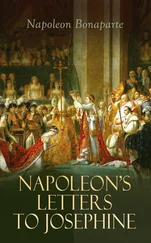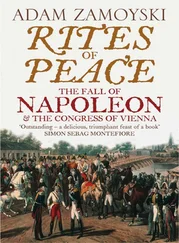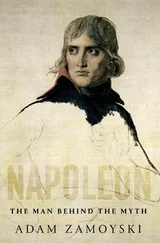The two-week campaign had been a messy, close-run business with no set-piece battle to present to the French public as grand spectacle. It was therefore necessary to fabricate one. In his despatch to the Directory, Bonaparte announced that the battle of Arcole had decided the fate of Italy. He grossly exaggerated Austrian losses while diminishing his own, and presented an account of derring-do to flatter French national pride. The captured flags were borne to Paris by Le Marois, who at the public ceremony in which they were handed over made a speech portraying Bonaparte tracing the path to victory, flag in hand, conveying the notion that he had stormed the bridge. In no time a print appeared in Paris depicting Bonaparte and Augereau leading the troops across it on horseback, each clutching a banner, succeeded by another showing Bonaparte on foot, brandishing the flag and encouraging his troops to follow him.20
For centuries kings and commanders had had their deeds immortalised in painting out of a mixture of vanity and political assertiveness. The Revolution had created a thirst for information among the illiterate which was satisfied by crude allegorical depiction, and this led to an explosion of semi-sacral illustration in praise of the nation, its leaders and its martyrs. Generals were depicted in heroic poses, and there were engravings of commanders such as Hoche and Moreau in circulation before any image of Bonaparte.21
But he took propaganda to new levels. His mendacious despatches to the Directory, excerpts from which were printed and even plastered on walls for the public to read, were dramatic and exciting. The hyperbolic language of the Revolution in which they were couched created a subliminal sense of the supernatural, of the miraculous, of an adventure being enacted by men who appeared as superhuman as the heroes of the Iliad . Poets, playwrights and hacks of every sort saw in this excellent raw material for their own craft, and their works added to the concert of myth-making verbiage. This was accompanied by an iconography to suit, and between the moment he took command of the Army of Italy in 1796 and the end of 1798, no fewer than thirty-seven different prints of Bonaparte appeared on the market, some commissioned, some spontaneous, some based on actual representations of him, others giving him entirely imagined features, but all representing him as a hero.22
The propaganda surrounding Arcole saved Bonaparte’s position, but it could do little to assuage the pain inflicted by Josephine. ‘At last, my adorable Josephine, I am coming back to myself, death no longer stares me in the face,’ he had written with understandable relief the day after the fiasco of Arcole. Back in Verona two days later, he wrote her a tender note just before going to bed, reproving her as usual for not writing. ‘Don’t you know that without you, without your heart, without your love there can be no happiness of life for your husband,’ he wrote, going on to say how he longed to touch her shoulder, hold her firm breast and to plunge into her ‘little black forest’. ‘To live in Josephine is to live in Elysium. To kiss her, on the mouth, the eyes, the shoulder, the breast, all over, all over!’ Two days after that, having heard nothing, he wrote in teasing vein: ‘I don’t love you at all any more, on the contrary I hate you.’ He asked her what occupied her days so fully to prevent her from writing. ‘Who can it be, this wonderful and new love who absorbs all your time, tyrannises your days and prevents you from caring for your husband? Take care, Josephine, one of these nights your door will be forced and I will be in your bed. You know! The little dagger of Othello!’ He then reverts to a more loving tone and looks forward to being in her arms again and planting a kiss on her ‘little rascal’.23
He reached Milan panting with love on 27 November, only to find that she had gone to Genoa (with Lieutenant Charles). His disappointment and bitterness are given full expression in a note dashed off to her that evening and a letter the following day. ‘Farewell, adorable woman, farewell, my Josephine,’ he ended. General Henry-Jacques Clarke, who arrived from Paris the next day, found Bonaparte ‘haggard, thin, all skin and bone, his eyes sparkling feverishly’.24
Clarke had been sent by the Directory with the ostensible mission of opening negotiations with the Austrians, but in fact to spy and report on the commander of the Army of Italy. He was pleasantly surprised when Bonaparte agreed that negotiations with Austria were in order. Bonaparte knew that having driven back the French in Germany, Austria was about to launch an all-out offensive in Italy and would not be inclined to negotiate. But he had to gain Clarke’s support, so he set out to charm him. In little over a week, Clarke was assuring the Directory that ‘There is nobody here who does not regard him as a man of genius …’ He praised the general’s judgement, his authority and his efficiency. ‘I believe him to be committed to the Republic, and without any ambition other than that of conserving the glory which he has acquired for himself,’ he followed this up.25
Clarke’s support was an important asset in Bonaparte’s long-running battle with the other arm of the Directory’s control – its commissioners. Their brief had varied with unfolding events: lured by the cash and spoils he sent back, the Directory charged them with political and financial control of the occupied territories, but with the discovery earlier that year that General Pichegru commanding the Army of the Rhine and Moselle had been plotting with the enemy, their brief had been extended to surveillance of the military. They rode about in civilian dress with tricolour sashes and plumes that gave them the aspect of high-ranking commanders, often overruling officers.
In Saliceti, Bonaparte had at his side a man who for all his venality and opportunism was someone he could work with. The other commissioner, Pierre-Anselme Garrau, an unprepossessing hunchback with a virulently Jacobin background, was a thorn in his side. Soon after the conclusion of the armistice at Cherasco, Bonaparte had received instructions from the Directory that diplomatic negotiations were the preserve of the commissioners, not the army commander. He had by then concluded an armistice with the kingdom of Naples, and was negotiating with envoys of the Pope.26
He left these negotiations to the two commissioners, who allowed themselves to be drawn into labyrinthine discussions which withered fruitless after three months. Worse, Garrau had inadvertedly revealed Bonaparte’s plan to surprise and capture British ships in Livorno, allowing them to get away. Bonaparte had for some time been informing the Directory of the commissioners’ incompetence and reporting the venality and scandalous behaviour of the civil functionaries operating in Italy. In July, after Saliceti was transferred to supervise the French reoccupation of Corsica, Bonaparte set about destroying Garrau. He forbade him to give orders to soldiers while bombarding him with demands for supplies and blaming him for every shortage. Bonaparte appointed his own officers to rule the occupied territories and began eliminating the ‘shameless scoundrels’, as he termed the officials following in the wake of the army, replacing them with equally venal ones who owed everything to him. Such usurpation of the Directory’s authority could end badly for Bonaparte, and the matter had reached a climax in November, at the time of the Arcole campaign. He needed to watch his back.27
In October, he ordered the arrest in Livorno of a Corsican by the name of Panattieri, the man Paoli had sent to search the Buonaparte house in Ajaccio in 1793 and bring all the papers he could find to Corte. At Bonaparte’s request, all the papers in Panattieri’s possession were seized. Meanwhile Joseph, who had gone to Corsica as soon as the British had evacuated it in order to secure the remains of the Buonaparte estate and see what could be added to it as a result of the flight of the pro-British Corsicans, scoured archives in Ajaccio and Corte. It was the first step in what was to be a methodical editing of the Buonaparte brothers’ activities on the island.28
Читать дальше












